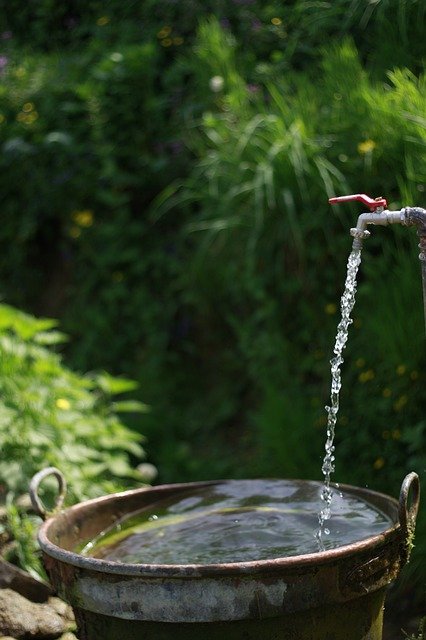
Water is the source of life, but it can also be a nemesis to the frustrated homeowner dealing with plumbing problems. There aren’t many ways to destroy a house faster than a major plumbing problem.
Keep your plumbing flowing by maintaining a temperature above 32 degrees and wrapping up any exposed pipe works. But, be advised that your pipes may freeze if the surrounding temperature near those pipes is less than freezing. Even in the best case scenario, it will take hours for thawing to happen before you have running water again. At worst, they will burst and you’ll be paying to repair the damage.
To keep your pipes from freezing in the winter, maintain a constant temperature in your home above freezing, and insulate external pipes. Pipes will begin to freeze if the surrounding temperatures are below the freezing mark. It may take some time in order for the pipes to thaw so that you can have running water. However, they could burst, leading to flooding and costly repairs.
If you discover a pipe has frozen, open a tap on the line to allow the thawing ice to drain. This can relieve the pipe pressure that could cause bursting and further home damage.
If you discover a pipe has frozen, turn on the nearest faucet so the water has an escape route when the pipe starts to thaw. This reduces pressure to keep the pipe from bursting, and could prevent cracks from appearing.
Don’t use harsh chemicals such as toilet tablets in your toilet. These things may help improve smells, but they can damage the rubber components of a toiler, which can cause it to function improperly or even worse, completely break down.
Septic Tank
Do not put any oil, fat, or greasy foods or products in your sink. Oils will eventually harden and clog up your drain. This is especially true if you have a garbage disposal, as the fat will cause the blades to run slower and less efficiently. The best thing to do is to dispose of oil-based liquids away from your sinks.
Pump out your septic tank at least every five years to keep it working well. Although having a septic tank pumped costs money, it is nothing compared to what you will have to spend on cleaning up a backup of sewage or repairing or replacing your septic system.
If you want to make sure your garbage disposal is going to be around as long as the house it is inside of, make sure you clean it often. By regularly incorporating a routine using a combination of dish soap, lemon rinds, and even cherry pits, you can keep your disposal running smoothly and smelling as fresh as the day it was installed.
Don’t use harsh chemicals such as toilet tablets that claim to be cleaners in your toilet. These products may well remove odors, but they have the side effect of damaging the rubber in your toilet, causing poor functionality or even complete breakdown of the fixture.
You should always put plenty of cold water through your garbage disposal while it is running. The cold water keeps your blades sharp, which helps your disposal run smooth. If you use hot water it will liquefy the grease, allowing it to accumulate in your drain causing your pipes to clog.

If your toilet gets clogged, and the plunger is not working, and a plunger is not doing the trick, but be sure to pour it from a height that is waist level or above so you do not flood the bathroom. Repeat this procedure if necessary as the water goes back to a lower level.
If you have any water in your dishwasher that should not be there, check the connection on your kitchen sink. The water will not drain into the dishwasher from the sink if it is configured in an uphill and downhill position.
Garbage Disposal
Frozen pipes can be a disaster and cause you so much money. Fortunately, frozen pipes are easy to prevent. First, ensure that all outside pipes have sufficient insulation. When wintertime comes, disconnect and drain your hoses and shut off outside faucets. If you do this, it will help you to save on repair bills.
Never put your bare hands to try fixing your garbage disposal. Even when the garbage disposal presents significant danger. You can look online to get schematics or troubleshooting advice for the disposal that you have.
Clean the aerator to adjust water pressure issues which result from sediment build up. Disassemble the fixture to remove the aerator, and then scrub it with vinegar and a small brush. Rinse the aerator with water, put it back together and then attach it back onto the faucet. Doing so will assist in increasing water pressure since obstructions in the aerator are removed in this process.
Check the floors in your bathroom for soft areas around the floors. You can save money simply by noticing and treating this problem early as possible.
Do not expect to clean grout out of a line by yourself. You can attempt to dislodge the blockage or break it up to help remove it. Plastic pipes, if you have them, will work better than metal. This usually requires professional people to come in to help you get rid of this problem.
As it is with anything, good preparation and education are keys to avoiding problems, and this holds true with plumbing as well. You will make better decisions if you know what can damage your plumbing system. Keep the above tips in mind to be better prepared to quickly fix any plumbing problems that do arise.
It is important not to run water while using a garbage disposal. A lot of people assume that running water while running the disposal will help the contents to flush through better, but really this is not helpful. Actually, the water can make the garbage stick to the disposal, which can lead to more damage.
